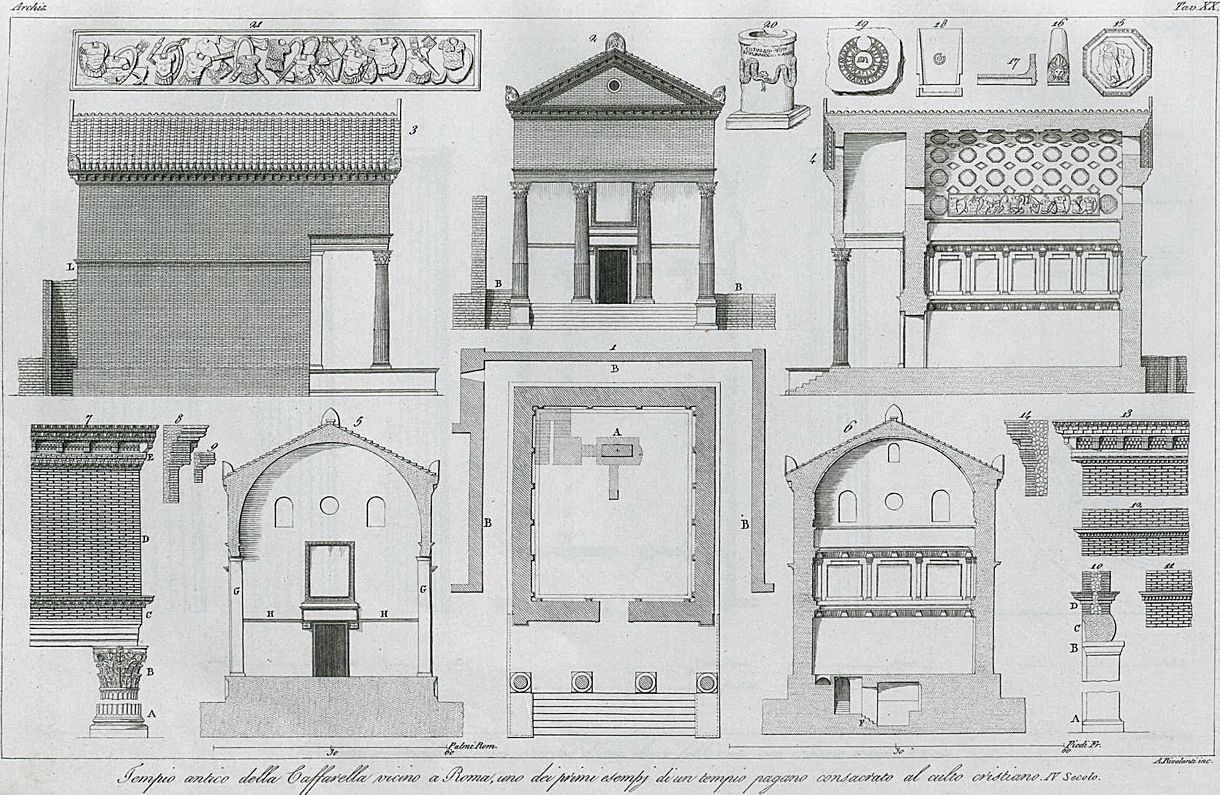Ancient Temple of the Caffarella
1. Plan of the temple: at A is the small subterranean oratory added to this temple when it was converted to a church under the title of St. Urban; the section of it is seen at F, No. 6; the letters B B B show a brick wall partly in ruins, formerly the enclosure of the temple.
2. Front elevation of the temple.
3. Side elevation of the temple.
4. Longitudinal section of the temple.
5. Longitudinal section of the portico.
6. Transverse section of the cella, and through the small subterranean oratory F; it is in this oratory we find an ancient fresco painting, representing the Virgin, St. John, and St. Urban..
7. Details of the Corinthian order of the fašade, the base A and capital B, as also the architrave, are in marble; the entablature, the attic D, and cornice E, are in brick.
8. Section of the cornice, showing the arrangement of the bricks.
9. Part of the profile of the raking cornice of the pediment.
10. Details of the inner order of the portico: the base A and capital B in marble, of the pilasters at the angles of the portico and cella marked G G; the architrave C also in marble; and the profile of the cornice D on the interior and exterior of the portico.
11. Brick cornice over the columns and pilasters in the interior of the portico.
12. Another small cornice in brick, shown at L, in the side elevation No. 3.
13. General cornice of the temple.
14. Section of the same.
15. Octagonal panel from the center of the vaulting, on which may be observed the remains of a bas-relief in stucco, representing a man and a woman; other remains show that all the panels were similarly decorated in stucco.
16. Ornament in terra cotta, called in Latin antefixa.
17. Section of the antefixa.
18. Plan and section of one of the tiles employed in the covering of the temple.
19. Stamp in the center of the tile, as seen in No. 18, in the middle a cypher, round which is the following inscription--OPUS DOL AELI ASCLEPI EX PR FAVSTINAE FIGLIN PONTICI
20. Ancient altar of a circular form found near the temple, now under the portico supporting the stoup for holy water; an inscription in Greek shows that it was consecrated to Bacchus by Apronianus, priest and interpreter of his mysteries; the hooded serpent which winds round it is also an emblem of Bacchus.
21. One of the stucco friezes of the cella, beneath the panel of the vault, as shown in No. 4.
Piranesi has given complete details of this temple in his work Racolta de' Tempj Antichi; Roma, 1780, first part.
| |

|
